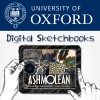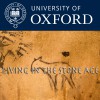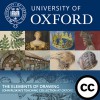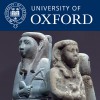Ashmolean Museum

Relevant Links
The Ashmolean is a University Museum and a Department of the University, which owns the collections and employs the museum staff. The Museum has very close links with the faculties, and the colleges, and museum staff undertake a great deal of University teaching and research. The Museum's Collections are also an important teaching and research resource for scholars and students from other institutions both in this country and abroad.
Series associated with Ashmolean Museum
| # | Episode Title | Description | People | Date | |
|---|---|---|---|---|---|
| 98 | Conference Programme | Conference Programme for the conference. | Conference Programme | 17 Jan 2020 | |
| 97 | Art History and Museum as Medium | Cai Guo-Qiang, Artist, gives the eighth and final presentation in the symposium. | Cai Guo-Qiang | 13 Jan 2020 | |
| 96 | In the Volcano: Cai Guo-Qiang and Pompeii | Jerome Neutres, Independent Curator, gives the seventh talk in the symposium. | Jerome Neutres | 13 Jan 2020 | |
| 95 | Cai Guo-Qiang: In Search of El Greco | Saul Nelson, Ruskin School of Art, DPhil Candidate, gives the sixth presentation in the symposium. | Saul Nelson | 13 Jan 2020 | |
| 94 | Yi 羿 - Myth: Shooting the Suns | Paul Bevan, Ashmolean Museum, Christensen Fellow in Chinese Painting, gives the sixth presentation in the symposium. | Paul Bevan | 13 Jan 2020 | |
| 93 | Two Gunpowder Drawings and Cai Guo-Qiang in Japan | Lena Fritsch, Ashmolean Museum, Curator of Modern and Contemporary Art, gives the fourth presentation in the symposium. | Lena Fritsch | 13 Jan 2020 | |
| 92 | Cai Guo-Qiang and the Depths of Spectacle | David Taylor, University of Oxford, Associate Professor of English, gives the third presentation in the symposium. | David Taylor | 13 Jan 2020 | |
| 91 | Context and Influence in Cai Guo-Qiang's Work | David Eliott, Redtory Museum of Contemporary Art, Guangzhou, Vice Director and Senior Curator, gives the second talk for the symposium. | David Eliott | 13 Jan 2020 | |
| 90 | Welcome and Introduction | Shelagh Vainker, Curator of Chinese Art and Exhibition Curator, gives the first talk in the symposium. | Shelagh Vainker | 13 Jan 2020 | |
| 89 | Felas Octavi | New research reveals that this sling bullet is much ruder than previously thought. Prof. Alison Cooley discusses this with Dr Jane Masséglia and Dr Hannah Cornwell in the Ashmolean's updated Reading and Writing Gallery. | Alison Cooley, Jane Masséglia, Hannah Cornwell | 11 Apr 2017 | |
| 88 | Lion Statue | On whether there were ever lions in Egypt. Today, there are no lions roaming wild in north Africa, but evidence from ancient Egypt suggests that lions once did. | David Whyte Macdonald | 23 Jan 2017 | |
| 87 | Henry VIII Renaissance Medal | On Henry VIII and the Founding of the Church of England Minted at London in 1545, this medal shows a bust of Henry VIII, with inscriptions in Hebrew and Greek on the reverse. | Diarmaid MacCulloch | 23 Jan 2017 | |
| 86 | Meissen porcelain chocolate cup and tea bowl | On arranged marriages among royalty. | Helen Watanabe-O'Kelly | 23 Jan 2017 | |
| 85 | Arab robe worn by T. E. Lawrence | On Lawrence of Arabia and wearing Arab robes. T. E. Lawrence, or Lawrence of Arabia was infamous for his scruffy appearance when in the British Khaki uniform, and wore it as little as possible. | Eugene Rogan | 23 Jan 2017 | |
| 84 | Silver-gilt carriage clock | This travelling calendar carriage clock dates to 1747–1823. Why would such a clock need to have both lunar and sun time represented on it? With Professor Chris Lintott Astrophysics, University of Oxford. | Chris Lintott | 23 Jan 2017 | |
| 83 | Ennui by Walter Richard Sickert | On Viginia Woolf's interpretation of Walter Sickert's painting of Ennui. | Dame Hermione Lee | 23 Jan 2017 | |
| 82 | Mummified Child | On growing up and dying in ancient and modern populations. | Sarah Harper | 23 Jan 2017 | |
| 81 | Carved Stone Ball | We still do not know why these stone balls were created. They date to the late Neolithic or early Bronze Age, between 3200 and 1500 BC. | Marcus du Sautoy | 23 Jan 2017 | |
| 80 | Portrait of Mademoiselle Claus by Édouard Manet | Are Eastern Art and Western Art basically the same, and what is painting for? On Édouard Manet, Cézanne and their similarity to Chinese paintings. With Professor Craig Clunas Art History, University of Oxford. | Craig Clunas | 23 Jan 2017 | |
| 79 | Tombstone of a Muslim girl | On what were people’s feelings about death and the dead in North Africa a thousand years ago? What does this tombstone tell us? With Professor Julia Bray, Arabic, University of Oxford. | Julia Bray | 23 Jan 2017 | |
| 78 | Mobile in Museums | Theodore Koterwas, Mobile Development Team Lead, IT Services, gives a short talk for Oxford University Museums Staff Conference | Theodore Koterwas | 31 Oct 2016 | |
| 77 | Celebrating Diversity: An LGBTQ+ Tour of Oxford University’s Museums and Collections | Beth Asbury, Assistant to the Director and Administration Team, Pitt Rivers Museum, gives a short talk for Oxford University Museums Staff Conference. | Beth Asbury | 31 Oct 2016 | |
| 76 | Quantifying and Mitigating Human Generated Vibration in Museum Exhibits | Daniel Bone, Deputy Head of Conservation, Ashmolean Museum, gives a short talk for Oxford University Museums Staff Conference. | Daniel Bone | 31 Oct 2016 | |
| 75 | Interacting with Artefacts, Oxfordshire Collections Project | Stephen Barker, Oxfordshire County Council Museums Service, gives a short talk for Oxford University Museums Staff Conference. | Stephen Barker | 31 Oct 2016 | |
| 74 | A year in the Zoology Collection | Mark Carnall, Collections Manager (Life Collections), Museum of Natural History gives a short talk for the Oxford University Museums Staff Conference. | Mark Carnall | 21 Oct 2016 | |
| 73 | Memories under the microscope: collaborations between Oxford University Partnership Museums and University of Oxford research departments | Helen Fountain, Reminiscence Officer, Oxford University Museums and Kate Hamblin, Senior Research Fellow, University of Oxford Institute for Population Ageing give a short talk for the Oxford University Museums Staff Conference. | Kate Hamblin, Helen Fountain | 21 Oct 2016 | |
| 72 | VERVE: Connecting the public with displays at the Pitt Rivers Museum | Beth McDougall and Madeleine Ding, VERVE Team, Pitt Rivers Museum give a short talk for the Oxford University Museums Staff Conference. | Beth McDougall, Madeleine Ding | 21 Oct 2016 | |
| 71 | Joint Museums Youth Forum Project | Sarah Lloyd and Carly Smith-Huggins, Education Officers, Museum of Natural History give a short talk for the Oxford University Museums Staff Conference. | Sarah Lloyd, Carly Smith-Huggins | 21 Oct 2016 | |
| 70 | Cabinet: Integrating Text and Object in Oxford Teaching | Giovanna Vitelli, Director, University Engagement Programme, Ashmolean Museum gives a short talk for Oxford University Museums Staff Conference. | Giovanna Vitelli | 21 Oct 2016 | |
| 69 | Why community groups work with museums | Nicola Bird, Community Engagement Officer, Oxford University Museums gives a short talk for the Oxford University Museums Staff Conference. | Nicola Bird | 21 Oct 2016 | |
| 68 | Discussing Penicillin | Marie-Louise Kerr, Penicillin Exhibition Curator, Museum of the History of Science gives a short talk for the Oxford University Museums Staff Conference. | Marie-Louise Kerr | 21 Oct 2016 | |
| 67 | Transportation Transformation | Andrew Hughes, Move Project Team Leader, Pitt Rivers Museum, gives a short talk for the Oxford University Museums Staff Conference. | Andrew Hughes | 21 Oct 2016 | |
| 66 | Dodo Roadshow | Scott Billings, Digital Engagement Officer, Museum of Natural History gives a short talk for Oxford University Museums Staff Conference. | Scott Billings | 21 Oct 2016 | |
| 65 | The Real Abascantianus | On 30th October 2015, we staged a Roman funeral in the Ashmolean Museum. But who were we burying? Here you can hear the talk that Prof. Alison Cooley gave on the night, telling the story of the man behind the urn. | Alison Cooley | 26 Apr 2016 | |
| 64 | Rider Reliefs | Prof. Alison Cooley talks with Dr Jane Masséglia about two Roman tombstones showing men on horseback, recently installed by AshLI in the Ashmolean Museum's Rome Gallery. | Alison Cooley, Jane Masséglia | 26 Apr 2016 | |
| 63 | Early Christian Gold Glass | Prof. Alison Cooley and Dr Jane Masséglia from the Ashmolean Latin Inscriptions Project, talking about the symbols and celebrations of early Christians in the Roman Empire. | Alison Cooley, Jane Masséglia | 26 Apr 2016 | |
| 62 | Creative Commons | Death at the Museum | Highlights of the Ashmolean Museum's Halloween DEADFriday event. | University of Oxford | 16 Dec 2015 |
| 61 | 'Accidental Death in Tudor England' | Professor Steven Gunn and Dr Tomasz Gromelski gives a TORCH bite-size talk at the Ashmolean Museum's DEADFriday event | Dr Steven Gunn and Dr Tomasz Gromelski | 24 Nov 2015 | |
| 60 | Oscar Wilde's Love Beyond the Grave | Michèle Mendelssohn gives a TORCH bite-size talk at the Ashmolean Museum's DEADFriday event | Michèle Mendelssohn | 24 Nov 2015 | |
| 59 | 'Death Masks: Facing the Dead' | Emily Knight gives a TORCH bite-size talk at the Ashmolean Museum's DEADFriday event | Emily Knight | 24 Nov 2015 | |
| 58 | ‘Ophelia, Death and the Pre-Raphaelite Brotherhood’ | Hannah Lyons gives a TORCH bite-size talk at the Ashmolean Museum's DEADFriday event | Hannah Lyons | 24 Nov 2015 | |
| 57 | 'Crowley's Tarot and Egyptian Art' | John Dunning gives a TORCH bite-size talk at the Ashmolean Museum's DEADFriday event | John Dunning | 24 Nov 2015 | |
| 56 | ‘Who owns your face when you are DEAD?’ | Jane Caplan gives a TORCH bite-size talk at the Ashmolean Museum's DEADFriday event | Jane Caplan | 24 Nov 2015 | |
| 55 | 'The Roman Art of Dying' | Paul Roberts gives a TORCH bite-size talk at the Ashmolean Museum's DEADFriday event | Paul Roberts | 24 Nov 2015 | |
| 54 | 'Victorian Children's Literature and Death' | Franziska Kohlt gives a TORCH bite-size talk at the Ashmolean Museum's DEADFriday event | Franziska Kohlt | 24 Nov 2015 | |
| 53 | 'A View from My Corpse' | Raymond Tallis gives a TORCH bite-size talk at the Ashmolean Museum's DEADFriday event | Raymond Tallis | 24 Nov 2015 | |
| 52 | Stone tools | William Mills shows the range of stone tools early humans created for different purposes | William Mills | 13 Oct 2015 | |
| 51 | Creative Commons | Environments of the past | William Mills shows how all the technologies interact and how early humans used their environment and their ingenuity in their everyday liv | William Mills | 13 Oct 2015 |
| 50 | Art | The Living in the Stone Age team create a piece of artwork on deerskin using natural pigments made from charcoal, chalk and ochre. | Iain Morley, William Mills, Cory Cuthbertson, Kint Janulis | 13 Oct 2015 | |
| 49 | Music | Iain Morley talks about evidence of music making in the Stone Age and makes a bull roarer. | Iain Morley | 13 Oct 2015 | |
| 48 | Fish trapping | Klint Janulis makes a fish trap using willow and flint tools | Klint Janulis | 13 Oct 2015 | |
| 47 | Fire starting using flint, Iron pyrites and fungus | Manse Ahmad uses King Alfred Cake and Horse hoof fungus, flint and Iron pyrites to raise a flame. | Manse Ahmad | 13 Oct 2015 | |
| 46 | Fire starting using a bow drill | Manse Ahmad demonstrates fire starting using friction and pressure | Manse Ahmad | 13 Oct 2015 | |
| 45 | Fire Lighting Ancient and Modern | Manse Ahmad talks about the importance of fire and talks about the how ingenious early humans were in creating fire, something that is so easy for us to do today. | Manse Ahmad | 13 Oct 2015 | |
| 44 | Creative Commons | Stone Age Technology | Klint Janulis and Iain Morley introduce the series of films | Klint Janulis, Iain Morley | 13 Oct 2015 |
| 43 | Flint Knapping | William Mills demonstrates flint knapping; the process of creating flint tools | William Mills | 13 Oct 2015 | |
| 42 | Braiding and Cordage | Using stinging nettles to make strong string | Cory Cuthbertson | 13 Oct 2015 | |
| 41 | The building bricks of an empire | The bricks that built the Roman Empire | Alison Cooley, Jane Masséglia | 21 Sep 2015 | |
| 40 | Freedmen and Friends | A funerary inscription reveals questions of social status and friendship in the Roman world. | Alison Cooley, Hannah Cornwell | 27 Jul 2015 | |
| 39 | Creative Commons | A Bullet with your Name on | Slingshot bullet from the seige of Perusia, 41/40 BC. | Jane Masséglia, Hannah Cornwell | 12 May 2015 |
| 38 | Creative Commons | A Roman Intelligence Officer | A Roman Intelligence Officer stationed in Britain. | Alison Cooley, Jane Masséglia, Hannah Cornwell | 12 May 2015 |
| 37 | Creative Commons | A Roman Soldier's plaque to Hercules | The Roman soldier who went to Newcastle and punched Hercules. | Alison Cooley, Jane Masséglia, Hannah Cornwell | 12 May 2015 |
| 36 | Creative Commons | Hercules and the Roman teenager | A memorial for a teenage son, with some unusual images of Hercules. | Alison Cooley, Jane Masséglia, Hannah Cornwell | 12 May 2015 |
| 35 | Egypt and the Ashmolean – 5 millennia of collections care part two | Mark Norman, Head of Conservation, Ashmolean Museum, concludes his talk at the Understanding Egyptian Collections conference | Mark Norman | 17 Sep 2014 | |
| 34 | Ancient Worlds: Open Data, Mobile Web, Haptics, Digital Touch | Stephen Devine, Digital Communications Officer, and Sam Sportun, Collection Care Manager/Senior Conservator, Manchester Museum give a talk for the Understanding Egyptian Collections conference. | Stephen Devine, Sam Sportun | 17 Sep 2014 | |
| 33 | Bringing it all together in the Artifact Lab: Conservation, research, display, interpretation | Molly Gleeson, Rockwell Project Conservator, Penn Museum, University of Pennsylvania, gives a talk at the Understanding Egyptian Collections conference. | Molly Gleeson | 17 Sep 2014 | |
| 32 | Reflecting on Egyptian Pigments: the use of Fibre Optic Reflectance Spectroscopy (FORS) for pigment analysis at the Fitzwilliam Museum | Jennifer Marchant, Antiquities Conservator and Abigail Granville, Pigment Analyst, Fitzwilliam Museum, University of Cambridge, give a talk at the Understanding Egyptian Collections conference. | Jennifer Marchant, Abigail Granville | 17 Sep 2014 | |
| 31 | On not exhibiting a corpse: the Mummy Chamber, Brooklyn Museum | Lisa Bruno, Head Objects Conservator, Brooklyn Museum, gives a talk at the Understanding Egyptian Collections conference. | Lisa Bruno | 17 Sep 2014 | |
| 30 | King Menkaure in Motion: the metamorphosis of a Monolithic royal sculpture from the Old Kingdom | Susanne Gänsicke, Conservator; Matthew Siegal, Chair of Conservation and Collections Management, Museum of Fine Arts, Boston, gives a talk for the Understanding Egyptian Collections conference | Susanne Gänsicke | 17 Sep 2014 | |
| 29 | Problems and possibilities for the Petrie Museum’s pottery display | Susanna Pancaldo, Senior Conservator, UCL Museums and Collections, gives a talk at the Understanding Egyptian Collections conference. | Susanna Pancaldo | 17 Sep 2014 | |
| 28 | The importance of technical analysis and research for the conservation and display of archaeological garments | Anne Kwaspen, Conservator of the Archaeological Textile Collection, Katoen Natie, gives a talk at the Understanding Egyptian Collections conference | Anne Kwaspen | 17 Sep 2014 | |
| 27 | Mummy case saved by LEGO: a collaborative approach to conservation of an Ancient Egyptian cartonnage | Sophie Rowe, Conservator; Julie Dawson, Senior Assistant Keeper, Conservation, Fitzwilliam Museum, University of Cambridge, gives a talk at the Understanding Egyptian Collections conference. | Sophie Rowe | 17 Sep 2014 | |
| 26 | Evolving Attitudes: past and present treatment of Egyptian Collections of the Oriental Institute | Alison Whyte, Associate Conservator, Oriental Institute, University of Chicago, gives a talk at the Understanding Egyptian Collections conference. | Alison Whyte | 17 Sep 2014 | |
| 25 | The Stair of Glory: The Meet‐and‐Greet Gallery – a unique dramatic gallery at the Grand Egyptian Museum | Mohamed Gamal Rashed, Curator, Museum Display and Research Director, The Grand Egyptian Museum, Giza, Egypt, gives a talk at the Understanding Egyptian Collections conference. | Mohamed Gamal Rashed | 17 Sep 2014 | |
| 24 | The APPEAR Collaboration: a comparative study of ancient mummy portraits | Maria Svoboda, Associate Conservator of the Antiquities Department, J. Paul Getty Museum, California gives a talk for the | Maria Svoboda | 17 Sep 2014 | |
| 23 | Seeing Mummy Portraits: preparation for display in 2011 and recent collaborative investigation | Jevon Thistlewood, Paintings Conservator, Ashmolean Museum, gives a talk at the Understanding Egyptian Collections | Jevon Thistlewood | 17 Sep 2014 | |
| 22 | Raising the Dead: bringing design concepts to display | Daniel Bone, Deputy Head of Conservation, Ashmolean museum, gives a talk at the Understanding Egyptian Collections conference. The co-author is Sue Barker, Preventative Conservator, Ashmolean Museum. | Daniel Bone | 17 Sep 2014 | |
| 21 | Vertically Challenging: the investigation and conservation of a deteriorated coffin for vertical display | Bronwen Roberts, Conservator, British Museum, gives a talk at the Understanding Egyptian Collections. The Co-Author is Nicky Lobaton, Objects Conservator, Ashmolean Museum | Bronwen Roberts | 17 Sep 2014 | |
| 20 | The Redevelopment of the Ashmolean’s Egypt and Nubia Galleries – designing and building the new galleries | Stuart Cade, Partner in Charge, Rick Mather Architects, gives a talk at the Understanding Egyptian Collections | Stuart Cade | 17 Sep 2014 | |
| 19 | Egypt and the Ashmolean – 5 millennia of collections care part one | Mark Norman, Head of Conservation, Ashmolean Museum, gives a talk at the Understanding Egyptian Collections conference | Mark Norman | 17 Sep 2014 | |
| 18 | Introduction to the Egyptian Collections | Liam McNamara, Assistant Keeper for Ancient Egypt and Sudan, Ashmolean Museum, gives the first talk at the Understanding Egyptian Collections conference | Liam McNamara | 17 Sep 2014 | |
| 17 | Conclusion - taking iPads and tablets into the classroom | In this film, Adrian and Helen give their personal reflections on the apps and how iPads and tablets can be best integrated into classroom art teaching as well as museum visits. | Helen Ward, Adrian Brooks | 23 Jul 2014 | |
| 16 | Brushes 3 - Creating a visual masterpiece on an iPad | Brushes 3 is a dynamic, versatile drawing app with many features that you would expect to find on a sophisticated photo editing package. Adrian explains how it can benefit student work and how to get started with making your own art. | Adrian Brooks | 23 Jul 2014 | |
| 15 | 123d Catch - creating 3D images with an iPad or tablet | 123d Catch is a piece of 3D modelling software that allows you to create high quality, rotating 3D images on an ipad by taking a series of pictures around the object. This short video explains how to get started. | Adrian Brooks, Tim Dobson, Helen Ward | 23 Jul 2014 | |
| 14 | Pic Collage - gathering, researching and editing on a tablet | This short film gives an overview of the Pic Collage app. Pic Collage allows the user to collect images, collate and edit them and then export for further work. Helen Ward explains more. | Helen Ward, Adrian Brooks | 23 Jul 2014 | |
| 13 | Introduction - iPads as a learning and research tool | In this short introductory video, Helen and Adrian outline the key aims of the series of films and start to explain how iPads and tablets can effectively be used in a museum visit or in a classroom. | Adrian Brooks, Helen Ward | 22 Jul 2014 | |
| 12 | The Five Pillars of Islam | Yousef Jameel Curator of Islamic Art at the Ashmolean discusses The Five Pillars of Islam using objects from the Oxford University Museums. | Dr Francesca Leoni | 20 Nov 2013 | |
| 11 | Xu Bing: Documentary | A short documentary about artist Xu Bing, created by the Ashmolean Museum for Art and Archaeology. | Xu Bing | 07 May 2013 | |
| 10 | Creative Commons | Xu Bing: The Kind of Artist I Am | Chinese Artist Xu Bing gives a talk on the subject of his art and the kind of artist he is. | Xu Bing | 22 Apr 2013 |
| 9 | Creative Commons | 9. Creativity | Lesson 8. Invention! | Stephen Farthing | 24 Mar 2011 |
| 8 | Creative Commons | 8. Field Notes | Lesson 7. Strategies for collecting information and recording ideas as an aid to memory. | Stephen Farthing | 24 Mar 2011 |
| 7 | Creative Commons | 7. With Colour | Lesson 6. The most complex form of drawing. Starting with a pencil outline, the drawing is developed with a brush in clearly defined layers. | Stephen Farthing | 24 Mar 2011 |
| 6 | Creative Commons | 6. Measured Drawing | Lesson 5. Making a drawing that is dependent for its success on mathematical accuracy. | Stephen Farthing | 24 Mar 2011 |
| 5 | Creative Commons | 5. Making a Livelier Drawing | Lesson 4. Making a livelier drawing, where the line and tone have an energy because they have been applied at speed with a brush. | Stephen Farthing | 24 Mar 2011 |
| 4 | Creative Commons | 4. Toned Paper | Lesson 3. How toned paper can be used to provide the mid-tone in a drawing, which records where light and shade fall as a means of picturing an object. | Stephen Farthing | 24 Mar 2011 |
| 3 | Creative Commons | 3. The Edge of the Pencil | Lesson 2. We use tone, light, dark and the shades in-between to create illusions of volume and depth. | Stephen Farthing | 24 Mar 2011 |
| 2 | Creative Commons | 2. The Tip of the Pencil | Lesson 1. We use line to define spaces and things. It is not a question of magically getting the line right first time, but of first turning a contour into a line, and then systematically correcting that line until it looks right. | Stephen Farthing | 24 Mar 2011 |
| 1 | Creative Commons | 1. Introduction to the Elements of Drawing | Stephen Farthing R.A. presents eight practical drawing classes using John Ruskin's teaching collections to explain the basic principles of drawing. | Stephen Farthing | 24 Mar 2011 |










